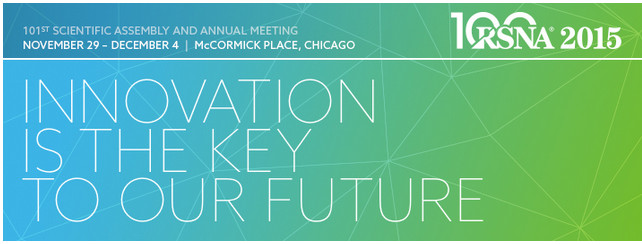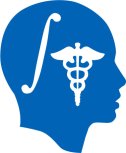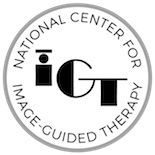Difference between revisions of "RSNA 2015"
(→Events) |
|||
| Line 103: | Line 103: | ||
Date/Time: Dec 4 2015 / 8:30AM - 10:00AM | Date/Time: Dec 4 2015 / 8:30AM - 10:00AM | ||
| + | |||
| + | [[RSNA2015_Materials |RSNA 2015 Materials]] | ||
Revision as of 14:00, 31 August 2015
Home < RSNA 2015
| ||

|

|

|
Contents
Events
Page Under Construction
| Sunday, November 29 | Monday, November 30 | Tuesday, December 1 | Wednesday, December 2 | Thursday, December 3 | Friday, December 4 |
|---|---|---|---|---|---|
| 8:00am-12:30pm: 3D Slicer Exhibit:Quantitative Imaging Reading Room. Lakeside Learning Center Hall D, Exhibit QRR002. 12:30pm-1:30pm: Meet-The-Experts Session, 3D Slicer Exhibit: Quantitative Imaging Reading Room. 1:30pm-6:00pm: 3D Slicer Exhibit: Quantitative Imaging Reading Room. |
8:00am-11:00am: 3D Slicer Exhibit: Quantitative Imaging Reading Room. Lakeside Learning Center Hall D, Exhibit QRR002. 10:30am-12:00pm: RSNA Refresher Course: "3D Interactive Visualization of DICOM Images for Radiology Applications: Hands-on Workshop." 10:30am-12:00pm: RSNA refresher course RCA22: A Practical Introduction to Structured Reporting Tools and Resources 12:15pm-1:15pm: Meet-The-Experts Session, 3D Slicer Exhibit: Quantitative Imaging Reading Room. 1:15pm-6:00pm: 3D Slicer Exhibit: Quantitative Imaging Reading Room. |
8:00am-12:15pm: 3D Slicer Exhibit: Quantitative Imaging Reading Room. 12:15pm-1:15pm: Meet-The-Experts Session, 3D Slicer Exhibit: Quantitative Imaging Reading Room. |
---
8:00am-12:15pm: 3D Slicer Exhibit: Quantitative Imaging Reading Room. 12:15pm-1:15pm: Meet-The-Experts Session, 3D Slicer Exhibit: Quantitative Imaging Reading Room. |
8:00am-12:15pm: 3D Slicer Exhibit: Quantitative Imaging Reading Room. Lakeside Learning Center Hall D, Exhibit QRR002. 12:15pm-1:15pm: 3D Slicer Exhibit: Quantitative Imaging Reading Room. 1:15pm-6:00pm: 3D Slicer Exhibit: Quantitative Imaging Reading Room. |
8:00am-12:45pm: 3D Slicer Exhibit: Quantitative Imaging Reading Room. Lakeside Learning Center Hall D, Exhibit QRR002. 8:30am-10am: RSNA refresher course RC825B: Quantitative Image Analysis Tools |
3D Interactive Visualization of DICOM images for Radiology Applications
This course will be offered by the Neuroimage Analysis Center (NAC), at the 101th Scientific Assembly and Annual Meeting of the Radiological Society of North America (RSNA 2015). As part of the outreach missions of this NIH funded National Center, we have developed an offering of freely available, multi-platforms open source software to enable medical image analysis research. The 3D Visualization course along with the 3D Visualization-part1 and 3D Visualization-part2 datasets aim to introduce translational clinical scientists to the basics of viewing and interacting in 3D with DICOM volumes and anatomical models using the 3DSlicer software. The version of the software that will be used during this course is Slicer4.5.
- CME Content Code: Informatics
- CME Credits Categories:
- AMA PRA Category 1 Credits™: 1.5
- ARRT Category A+ Credit: 1.5
Teaching Faculty
- Sonia Pujol, Ph.D., Surgical Planning Laboratory, Department of Radiology, Brigham and Women’s Hospital, Harvard Medical School, Boston MA.
- Ron Kikinis, M.D., Surgical Planning Laboratory, Department of Radiology, Brigham and Women’s Hospital, Harvard Medical School, Boston MA.
- Kitt Shaffer, M.D. Ph.D., Boston University School of Medicine, Department of Radiology, Boston Medical Center, Boston, MA.
Logistics
- Date: Monday December 1, 10:30am-12:00 pm
- Location: Room S401AB, McCormick Conference Center, Chicago, IL.
- Registration: Please visit the RSNA registration website.
A Practical Introduction to Structured Reporting Tools and Resources
Presenter: Andrey Fedorov (one of the talks of the refresher course)
Learning objectives: 1) Understand the advantages of using structured data capture tools for research at your institution. 2) Learn how RSNA Radlex and other popular lexicons can help reduce ambiguity in your data. 3) Learn about tools leveraging the National Cancer Institute’s Annotation Imaging and Markup (AIM) format for reporting radiologist observations and quantitative image analysis results. 4) Learn about tools leveraging DICOM for reporting quantitative image analysis results.
Abstract: Institutions across the world are sitting on a potential gold mine of imaging-related information about their patients, but many are unable to make use of it. Structured reporting helps address this problem by leveraging standardized lexicons and case report forms to extract meaningful information from images and enable easy reuse of the resulting data.
A number of initiatives have been developed by academic institutions, governments, and other organizations in order to help promote the broader use structured reporting in clinical imaging research. This course seeks to convey a basic understanding of structured reporting concepts and a summary of available tools and resources. Participants should leave the course with a knowledge of which tools/resources will best suit their needs and how to get started with using them.
Course Number: RCA22 (W20150200)
Date/Time: Nov 30 2015 / 10:30AM - 12:00PM
Quantitative Image Analysis Tools: Communicating Quantitative Image Analysis Results'
Presenter: Andrey Fedorov
Learning objectives: 1) Review the meaning and importance of interoperability for quantitative image analysis tools. 2) Review specific use cases motivating standards-based interoperable communication of the analysis results. 3) Learn about free open source tools that can facilitate interoperable communication of analysis results using DICOM standard.
Abstract: Quantitative imaging holds tremendous but largely unrealized potential for objective characterization of disease and response to therapy. Quantitative imaging and analysis methods are actively researched by the community. Certain quantitation techniques are gradually becoming available both in the commercial products and clinical research platforms. As new quantitation tools are being introduced, tasks such as their integration into the clinical or research enterprise environment, comparison with similar existing tools and reproducible validation are becoming of critical importance. Such tasks require that the analysis tools provide the capability to communicate the analysis results using open and interoperable mechanisms. The use of open standards is also of utmost importance for building aggregate community repositories and data mining of the analysis results. The goal of this course is to build the understanding of the interoperability as applied to quantitative image analysis, with the focus on clinical research applications.
Course Number: RC825B (20150184)
Date/Time: Dec 4 2015 / 8:30AM - 10:00AM
